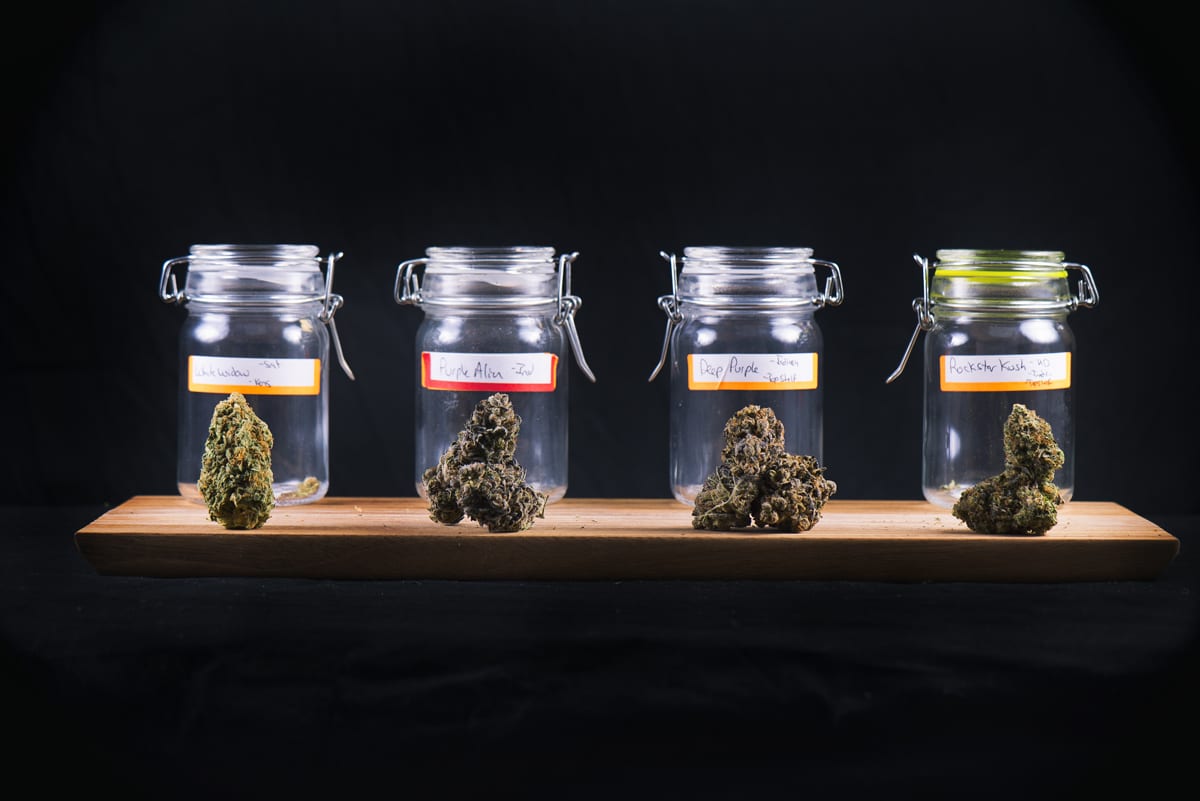Making Sense of the Recent Drop in Share Prices for Marijuana Companies
You can be excused for freaking out if you’ve invested heavily in legal cannabis companies.
Weed stocks took a pounding over the last few weeks, starting on Feb. 21. Many stocks in the US and Canada saw single day declines of up to 15 per cent!
Canadians share prices started to recover just days later, then dropped sharply once more, followed by a quick recovery.
So, what the heck is going on with the cannabis industry?
And, should you be freaking out, or is this storm going to blow over.
The answer is, a bit of both. If you’re invested in American weed stocks, there is a very real cause for concern.
If you’re invested in Canadian companies, I believe you’re okay.
As we previously reported, that staggering drop in both countries happened after US Attorney General Jeff Sessions and White House Press Secretary Sean Spicer hinted rather broadly that the federal government may go after recreational marijuana use, even in states where it has been legalized.
OUTLOOK FOR CANADIAN WEED STOCKS STILL STRONG
So, if you’re a US producer banking on legalization, yeah, you should be plenty worried.
We also reported that the long term outlook for Canadian companies looked pretty good. The US announcement doesn’t affect Canadian producers, and the Trudeau government is proceeding with full legalization of recreational marijuana.
We think this will drive more capital investment in Canada, at the expense of US producers … and in fact, this is already happening. Just this week I fielded calls from US investors looking for Canadian companies they can invest in or even buy.
But Canadian cannabis company stocks have also suffered a drubbing on the TSX-V, and have failed to get back to their Feb. 21 value.
CANNABIS STOCKS BOUNCE BACK AFTER DISPENSARY RAIDS

This, despite a healthy bounce after the trafficking charges against pot activists and entrepreneurs Marc and Jodie Emery.
The raids on their 19 marijuana dispensaries just underlined the federal commitment to keep marijuana production and sales only to those companies who have followed the rules, and who have gone through process for licensing under Health Canada.
But, despite that roughly six per cent boost in share prices after the raids, the markets remain jittery.
So, what’s happening there?
A couple of things, but the main reason is investor uncertainty, and a lack of knowledge about what governments are required to do before full legalization becomes a reality.
INACCURATE REPORT ON ‘DELAY’ HURT CANNABIS STOCKS THIS MONTH
The second big drop in Canadian share prices happened last week after Liberal MP Bill Blair said the government will be taking its time in implementing recreational sales of marijuana.
“We will take as much time as it takes to do it right,” said Blair on March 6th. “I’m pretty reluctant to suggest a specific time frame, frankly, because I don’t know how long this will take in each of our 10 provinces and three territories.”
Because Blair is also head of the marijuana legalization task force, and parliamentary secretary to the Justice Minister, his words fell on the stock market like a gigantic wet blanket.
Canopy Growth, the largest pot company in Canada, saw its share prices drop by 4.2 per cent on Wednesday. Rivals Aurora and Aphria both fell by five per cent. This was in addition to the previous drop after the remarks by Sessions and Spicer.
Part of the problem was due to ill advised and ill informed headlines like this one in the Financial Post: “Pot czar casts doubt on imminent legalization as marijuana companies shoulder ‘extreme valuations’.”
That article, like others in the Globe and Mail or Bloomberg, quoted analysts who argued the ‘delay’ means there will be an excess supply of cannabis, and it will take far too long for companies to achieve profitability.
All of which might be true were it not for the fact that informed people inside the industry have long known it will be at least late 2018 or even 2019 before recreational sales begin.
There is no ‘delay’. This is how it was always expected to go.
It brought a little smile to my face when I reread a paragraph in a business plan I wrote in 2014 for a marijuana company I worked with at the time.
This was before the Liberals were even elected, and at that time I wrote: “… the company is well placed to become one of the largest producers of dried marijuana in Canada. This becomes particularly important when one considers that, with a Liberal Party victory, legalization of recreational marijuana could occur by 2018.”
Even then, our group considered it likely that full legalization wouldn’t happen until late 2018, and actual sales at retail stores might not happen until 2019.
The fact is, Bill Blair’s comments don’t point to a delay in any sense. Blair was actually just referring to the standard process involved in getting to full legalization.
Most people think the federal government can pass a law to legalize marijuana and Presto!, stores can start selling weed.
It doesn’t work like that. Here’s why.
THE SLOW PACE OF BUREAUCRACY
Medical marijuana is controlled by the feds … but recreational marijuana will be regulated by the provinces.
That means the federal government has to negotiate separately with every province in Canada to implement recreational marijuana sales.
Legalizing marijuana isn’t just about the law; it’s also about having regulations in place to control distribution, to make sure kids don’t get their hands on weed, to ensure companies have quality controls in place, and to decide on how the product will be taxed by the federal and provincial governments.
All of that takes time.
In short, weed stocks fell in early March only because most analysts did not understand how long the process would take to legalize and regulate marijuana.
There is no ‘delay’. This is what we expected, and what most companies have prepared for.
This is also why many companies decided to go public, knowing they would need a big war chest to survive and prosper during the wait for full legalization.
Anyone who didn’t expect this was dreaming in technicolour.
Even in Colorado, where they didn’t have to deal with other governments, legalization occurred in November of 2012 through a state referendum, and retail sales didn’t start until Jan. 1, 2014.
MY BEST PREDICTION ON THE FUTURE OF CANNABIS SHARE PRICES
Given all that, how does the future look?
Here’s my best guess on how the process will go, and how it will affect the markets. (And remember, this is just a guess. Anything can happen on the markets, and a single headline can send stocks soaring or falling)
Spring, 2017: Blair’s Task Force will continue to discuss its recommendations with Members of Parliament through a series of Committee meetings. Stocks will remain pretty high, but most of the growth will go to new companies entering the stock markets for the first time.
Summer, 2017: Not much will happen through the ‘BBQ season’ as MPs hang out and press the flesh in their own constituencies. Stocks will remain relatively flat, but won’t drop by much.
August, 2017: Through late August and early September the task force and MPs will begin organizing to introduce the legalization bill. News on this front will produce moderate gains.
Fall Session, 2017: If all goes well, the legalization bill will be introduced and passed before the end of the Fall Session. Expect shares to rise significantly during this period. At least one other Licensed Producer will hit a $1 billion market cap.
At the same time, you can expect to see more provincial governments starting to draft some ideas for their own legalization plans. In fact, the province of New Brunswick has already announced their plan to have recommendations in place by this fall.
First half of 2018: With the bill passed, the federal government will begin writing draft regulations for the new recreational marijuana industry. The feds will also be negotiating with the provinces for agreements on recreational sales in each province.
There will be more headlines about ‘delays’ and ‘problems’, and stocks will alternately rise and fall during this period.
Second half of 2018: At least some if not most of the provinces will have regulations in place for recreational sales. Share prices will rise, even if actual sales don’t take place until 2019. Personally, I think you’ll see online sales in 2018, and sales from retail stores starting in 2019.
All of 2019: This is the year when the marijuana business really takes off, and the revenues for cannabis companies finally reflects the very high valuations they already enjoy. If Canada’s experience resembles what happened in Colorado after legalization, the industry will grow to at least $6 billion by 2022, and $10 billion by 2024.
Needless to say, share prices should likely rise.
So, do you need to freak out over these short term dips in the stock market?
I don’t think so. I believe the cannabis sector will outperform the index by a multiple between now and 2020.
Pot smokers aren’t the only ones getting high in Canada. Share prices are high now … but they’re going to go a lot higher over the long term.
By Gary Symons, Equedia













Hello.
Hypothetically speaking lets not include recreational impact.
Out of 11600 Kg annual capacity that Emblem will have starting September, how much will they be able to sell through their own patient affiliated system/online distribution hub?
The demand will be their there based on math alone. 130k medical patients now licensed to consume 2.2 grams per day and this number is only growing, (32k more then in September last year)
I guess where im going with this is that only a part of their production will be subjected to these shared costs once rec is in, or am i getting something wrong here?
Sorry I meant to post this on the COGS article.
Care to reply??????????????
Trulife Distribution – Nutrition Distribution helps our clients achieve success in a complex, competitive retail environment. Our team of nutrition industry experts takes care of everything from importation compliance to marketing, sales and distribution at the ground level. There is no need to navigate the complicated intricacies of the American market when we have already done the work. Let us use our experience to expand your brand and put your product into the hands of American consumers. https://trulifedist.com/
Trulife Distribution – Nutrition Distribution helps our clients achieve success in a complex, competitive retail environment. Our team of nutrition industry experts takes care of everything from importation compliance to marketing, sales and distribution at the ground level. There is no need to navigate the complicated intricacies of the American market when we have already done the work. Let us use our experience to expand your brand and put your product into the hands of American consumers. https://trulifedist.com/